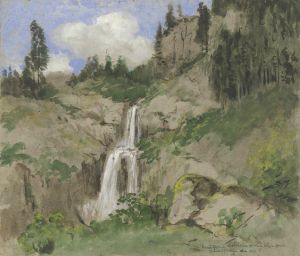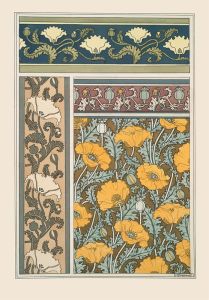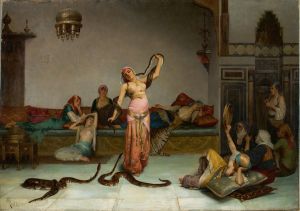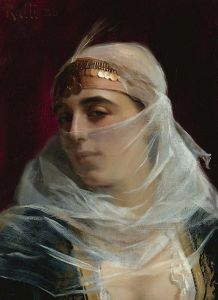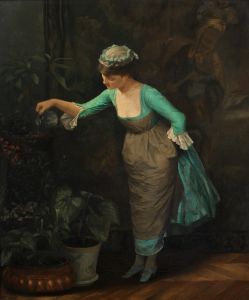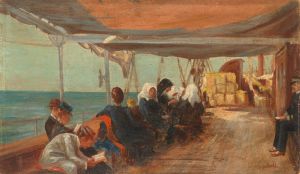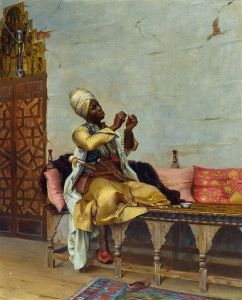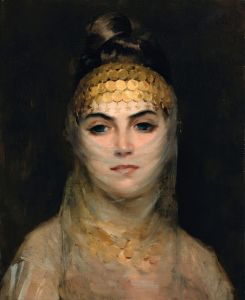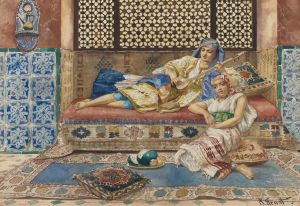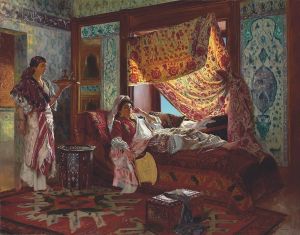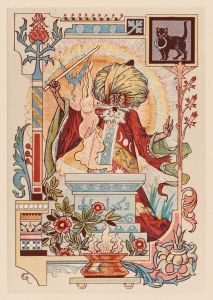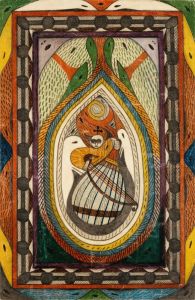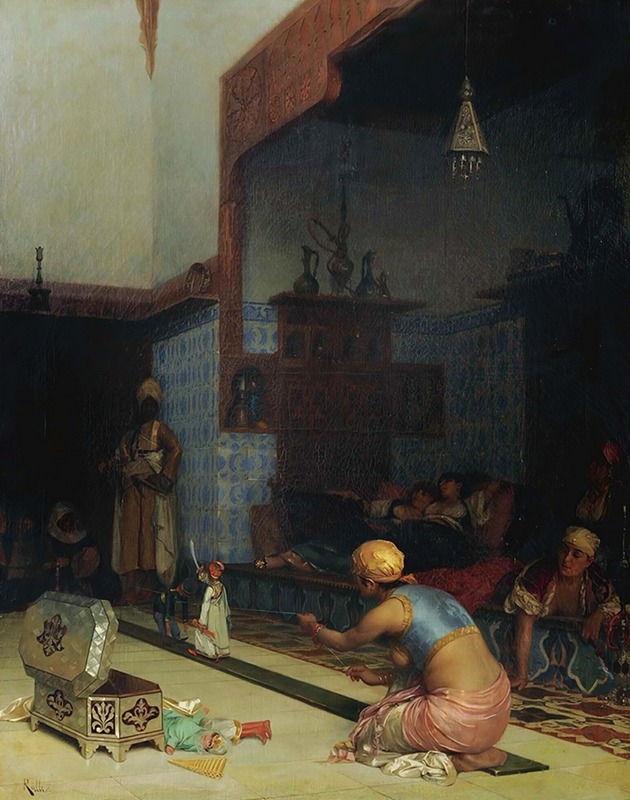
Marionettes In The Harem
A hand-painted replica of Theodoros Ralli’s masterpiece Marionettes In The Harem, meticulously crafted by professional artists to capture the true essence of the original. Each piece is created with museum-quality canvas and rare mineral pigments, carefully painted by experienced artists with delicate brushstrokes and rich, layered colors to perfectly recreate the texture of the original artwork. Unlike machine-printed reproductions, this hand-painted version brings the painting to life, infused with the artist’s emotions and skill in every stroke. Whether for personal collection or home decoration, it instantly elevates the artistic atmosphere of any space.
Theodoros Ralli, also known as Théodore Jacques Ralli, was a Greek painter born in Constantinople in 1852 and later became a prominent figure in the Orientalist art movement. He spent much of his career in France and Egypt, where he developed a keen interest in depicting scenes from the Middle East and North Africa. Ralli's works are characterized by their detailed and vibrant portrayals of everyday life, often focusing on themes of culture, tradition, and the exoticism of the Orient as perceived by Western audiences during the 19th century.
"Marionettes In The Harem" is one of Ralli's notable works, reflecting his fascination with the harem as a subject, a common theme among Orientalist painters. The painting captures a scene within a harem, a private space in Muslim households reserved for the women of the family and their close relations. Harems were often depicted by Western artists as mysterious and exotic places, filled with luxury and leisure, though these depictions were frequently romanticized and not always accurate representations of reality.
In "Marionettes In The Harem," Ralli employs his characteristic attention to detail and vibrant color palette to bring the scene to life. The painting likely features women and possibly children engaged in the entertainment of marionette puppetry, a popular form of amusement. The use of marionettes in the painting adds a layer of cultural interaction, as puppetry has a rich history in many Eastern cultures, serving both as entertainment and as a medium for storytelling and moral lessons.
Ralli's work is known for its technical precision and the ability to capture the textures and intricate details of fabrics, architecture, and human expressions. This attention to detail helps to create a vivid and immersive scene that invites viewers to explore the nuances of the depicted environment. The setting of the harem, with its opulent decor and intimate atmosphere, is rendered with a sense of authenticity that reflects Ralli's deep engagement with the cultures he portrayed.
The painting also reflects the broader context of Orientalism in 19th-century art, where Western artists often depicted Eastern societies through a lens of fascination and exoticism. While these works were popular and influential, they have also been critiqued for perpetuating stereotypes and for their lack of authenticity in representing the true diversity and complexity of Eastern cultures.
Ralli's "Marionettes In The Harem" is an example of how Orientalist art sought to capture the allure of the East, blending artistic imagination with elements of cultural observation. Today, such works are appreciated not only for their aesthetic qualities but also for the insights they provide into the historical interactions between Western and Eastern cultures during the period.
Theodoros Ralli continued to paint until his death in 1909, leaving behind a legacy of works that continue to be studied and admired for their artistic merit and cultural significance. His paintings, including "Marionettes In The Harem," remain valuable pieces for understanding the complexities and allure of Orientalist art.





